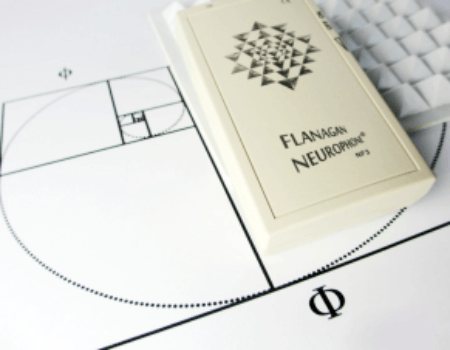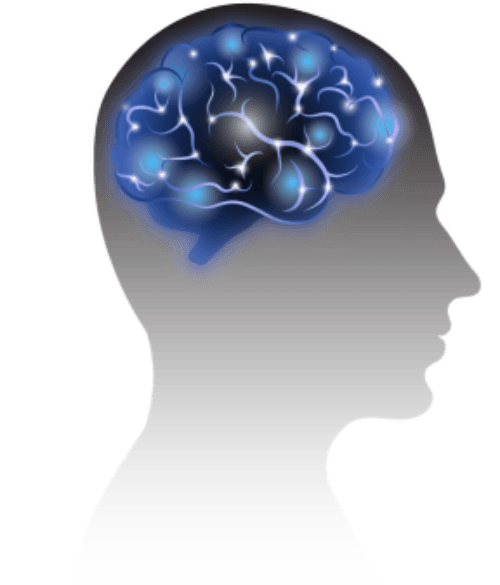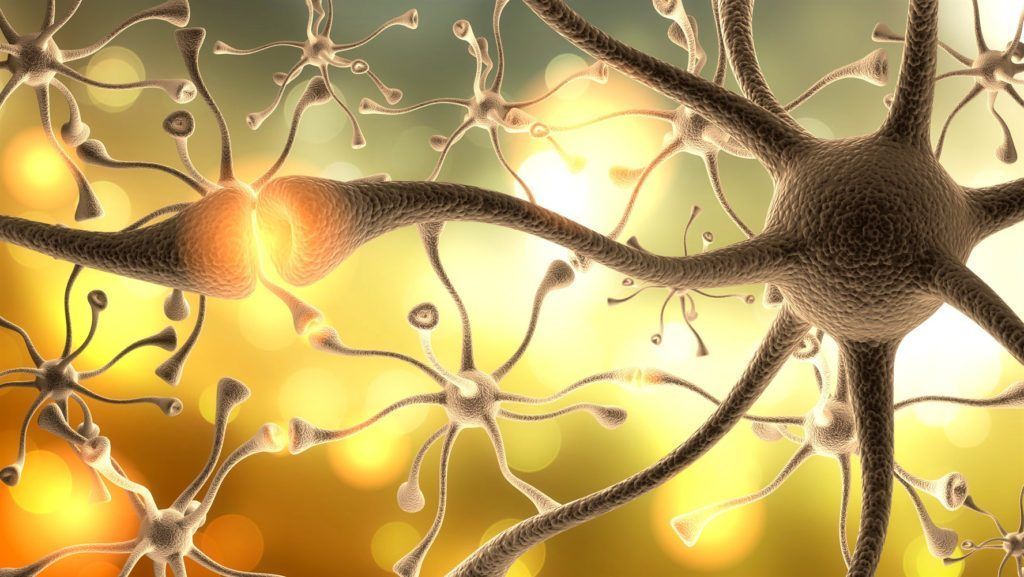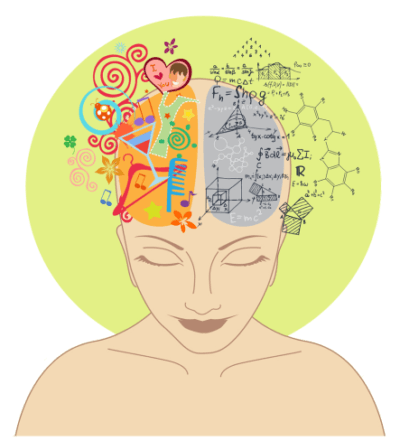The NEUROPHONE NF3 by Dr. Patrick Flanagan
Optimise learning & efficiency!

Do you dream of a key that allows you to access your unconscious and the energy system of each cell?
Are you looking for support in the learning process?
relaxation and meditation?
Dr. Patrick Flanagan is convinced that the frequencies of the Neurophone produce a universal effect of well-being on a cellular level, that they stimulate the neural network and support its expansion and sensitivity.
Technology
When using the Neurophone, the body becomes part of the communication circuit and acts as a kind of radio receiver. After connecting the two electrodes, the circuit is closed, the oscillations are transmitted and the sound is perceived. A reverse linkage mechanism works, in that the transmitted signals adapt to the energies that vary from person to person.
These depend, for example, on the mood of the person, whether he or she is in good shape or not, as well as on factors such as diet.


The Neurophone transforms sounds which are then transmitted to the brain by means of a carrier wave in the ultrasound range which is transmitted by the electrodes. For the sound signals, the Neurophone uses specific codes which are then decoded by the brain into sound. The basic ultrasound signal itself does not transmit any sound information. The Neurophone user is therefore not actively "programmed". The user himself defines the type of information he wishes to receive by choosing the sounds that will be transmitted by the ultrasound signal.
The currently available versions of the Neurophone have a built-in generator for a "pink rustle", a frequency of sounds, which in general promotes relaxation and balance. Alternatively, the Neurophone DSP allows the connection of an external sound source such as a CD player and thus listen to language learning or meditation programmes.
During the transfer of stimuli, the Neurophone bypasses the usual pathways through which we receive and process information and can thus bypass energy blockages. The sounds normally received by our ears are filtered out and their "importance" is controlled. In this way information is selected. The Neurophone bypasses all means of auditory reception. Patrick Flanagan has deciphered the code that is decoded into sound information in the brain. The sounds or information transmitted by the Neurophone are incorporated into the basic ultrasound signal. The Neurophone transmits the signal through the skin to a gland inside the ear, the Sacculus. Until now, the Sacculus was only known as an organ for balance. It is now known that the Sacculus is an ultrasound organ that is also used by mammals such as whales and dolphins for ultrasound perception. Patrick Flanagan states that our ancestors would have communicated with whales or dolphins through the Sacculus...
Nerve endings run from the Sacculus to various regions of the brain, for example to the region of long-term memory. On reaching the brain the signals are again deciphered/decoded and perceived as sound, because the Neurophone technology uses the same encoding system with which sounds are coded. The Neurophone can thus transmit sound information or learning programmes to our brain without detours or filters. Patrick Flanagan describes the Neurophone as an "experimental device". People often have different experiences of using the device. According to Patrick Flanagan, the main uses are for learning support as well as for relaxation and meditation. The Neurophone can convert sounds (such as speech and music) into electrical impulses, which can be transferred directly to the brain through any point in the body

The Patent Office refused to grant a patent for the device for more than six years while they discussed this advanced technology in detail. Finally, the officials said the Neurophone would never work and denied the patent. Patrick and his lawyer went to Washington D.C. with a device, to show it to the Patent Office examiner. The examiner said that if the device could restore the hearing of an employee who suffered from nervous deafness, he would reopen the cases and grant the patent. The device worked, the employee heard and ... as promised, the patent was granted.
Usage
The Neurophone is an ultrasound device. Sounds that are not audible to humans are transmitted directly to the brain through the skin where electrodes are placed. This avoids the filters and blockages that usually only let through information selected by our subconscious during normal listening.
The Neurophone is able to integrate the sound information into this ultrasonic carrier wave. Speech (e.g. for language learning or self-affirmation programmes) and music (e.g. CDs for meditation) are coded in such a way that they reach our brain with ultrasound and are then decoded.

The Neurophone has a connection for an external audio source. The basic signal of the Neurophone itself acts as a cellular harmonization, it does not contain any coded information. Depending on the choice of external CDs/sources, the user decides for himself what information he wants to transmit.
This power of "hearing through the skin" is a sense that we all possess, but which we have not used until now. In the meantime it has been scientifically proven that this form of sound transmission is possible. In fact, people who are deaf due to a hearing impairment are often able to hear with a Neurophone. The effects of the Neurophone vary of course from case to case depending on the user.
The perception of sound differs from normal listening; the sound is perceived holographically in the centre of the head and, at first, it often has a metallic resonance. With time and regular use of the Neurophone, the sounds become increasingly clear.

The Neurophone works on the wavelength of the human nervous system. The user simply places an electrode and becomes part of the oscillating circuit. The Neurophone can also be used by several people at the same time, i.e. two people can each carry an electrode and still be in contact, for example by holding hands. This is also possible in small groups. Thanks to a reverse linkage mechanism, the Neurophone automatically adjusts itself to the user's energy system.
The Neurophone is so small that it can be easily and discreetly used on trips, at conferences and seminars for better assimilation of content or at the workplace.
A CD or MP3 player can be connected to integrate CDs and audio sources according to your wishes and needs. For learning purposes, it is advisable to listen to the CD/audio track once in consciousness and then let it run in a loop while doing something else at the same time, or else plug it in while you are sleeping.

Who is Dr Patrick Flanagan?
In 1958, Dr. Patrick Flanagan, then 14 years old, invented the Neurophone, which earned him recognition as one of the most brilliant inventors of our time.
Patrick Flanagan was born on 11 October 1944 in Oklahoma City. Already as a child he was noticed for his extraordinary abilities and his thirst for knowledge which he could not satisfy. At the age of six, his parents set up his first chemistry laboratory in the basement. It was not until a little later that he began to do extensive research in the fields of physics and electronics.
At the age of eight, while reading a newspaper, he came across an article about a Russian "sleeping machine" that could reduce his need for sleep to only a few hours per night. Patrick built such a machine so that he could spend more time on his research.
At the age of 12, Patrick designed a guided missile detector. To build the device, he used spare parts from an amateur radio set (he had just received his amateur radio licence) and some new components worth $5. The detector could detect the launch and detonation of missiles and atomic bombs up to 13,000 kilometres away. Over the next three years, Patrick kept a diary in which he recorded and documented all the major missile launches and atomic bomb tests around the world. These documents earned him a visit from the Pentagon as the data was considered 'strictly confidential'.
At the age of 14, Patrick Flanagan built the first version of the Neurophone in just six months. In a science fiction book written by Hugo Gernsback, he read about an electronic telepathy machine. Impressed by the possibility - albeit still fictitious - of transmitting information directly to the brain via electrodes, Patrick built the first Neurophone from objects from household appliances. Although the sound quality was poor at first, he was able to transmit sound through the skin.
In 1962, when he was 18 years old, the Academy of Achievement in San Diego awarded him the gold medal for the discovery of the neurophone. In September of the same year, LIFE magazine dedicated an article to Patrick Flanagan and the Neurophone in its special edition (dedicated to "the 100 most important young men and women in the United States"). As a result he received thousands of letters and requests from all over the world. Some of them were simply addressed: Pat Flanagan, Inventor, Texas, USA.
Since then, Patrick Flanagan has made many discoveries. He was, among other things, a member of the Gemini space flight program team. As a research scientist for Tufts, he worked on a human-dolphin communication system for the Navy. This work led to the development of a 3D holographic sound system, which allowed sound to be directed in any direction in a room, but the listener would always feel that the sound was directed at them.
Patrick Flanagan wrote one of the first books on the power of the pyramids, which was a bestseller. He is also known, of course, for his research into longevity and health. He unlocked the secret of Hunzas' water and, together with Flanagan's microcluster colloids, produced a completely new type of molecule that forms the basis of revolutionary products such as Crystal Energy and Active-H.
Further research led to the development of a highly sophisticated digital neurophone, for which he applied for a patent. The US Defense Security Agency immediately placed it under a secrecy order in the name of national security and Dr. Flanagan was forbidden to conduct further research or even talk about the technology for four years.
When the secrecy order was finally lifted, twenty years after the first Neurophone was invented, Dr Flanagan was able to have the Mark XI and Thinkman Model 50 built in limited numbers. They were used as learning tools, as they could 'download' information stored in long-term memory.
From then on, Dr Flanagan continued to experiment with new concepts and advanced designs, with a view to further improving the neurophone technology. This device would be the ultimate interface between the brain and the computer. The idea of being able to transfer correctly formatted information into the long-term memory would lead to a revolution in the world of education. Existing educational models would become obsolete. Education would no longer be about the accumulation of data, but would focus on learning strategies and exploiting mental resources. This transformation would offer great opportunities for creativity and personal development through the mastery of intellectual potential.
The Neurophone is one of the most powerful devices that can influence the brain through electromagnetic stimulation that has ever been developed. In inventing the Neurophone, Dr Flanagan was decades ahead of his time. In recent years, he has continued to develop the Neurophone, testing new modes of transmission.
- Texts copyright Katrin Klink -
Contact info
GREEN SPIRIT SHOP
4, Passage Jean Nicot
75007 Paris
Tél :
(33) 06 25 27 08 80 (Barbara)
welcome@greenspiritshop.com
General information
Contact info
GREEN SPIRIT SHOP
4, Passage Jean Nicot
75007 Paris
Tél :
(33) 06 25 27 08 80
(Barbara)
welcome@greenspiritshop.com
General information
Green Spirit Hotels
Contact info
GREEN SPIRIT SHOP
4, Passage Jean Nicot
75007 Paris
Tél :
(33) 06 25 27 08 80 (Barbara)
welcome@greenspiritshop.com






